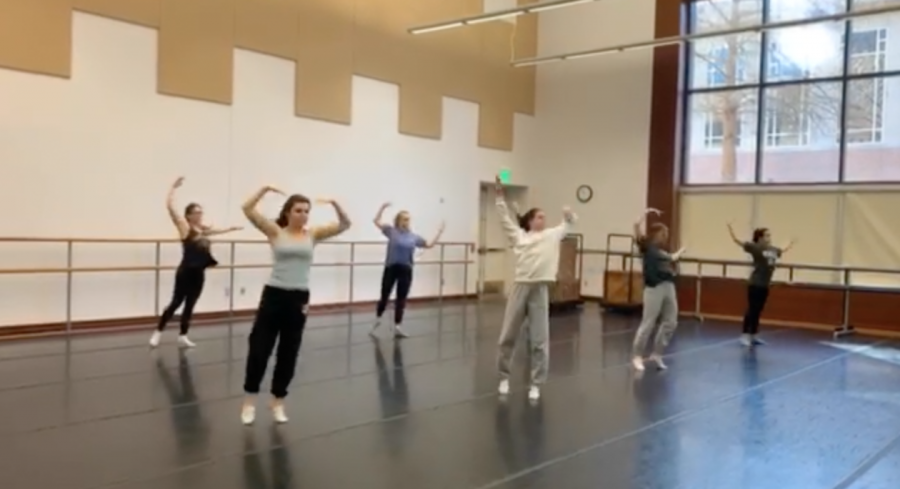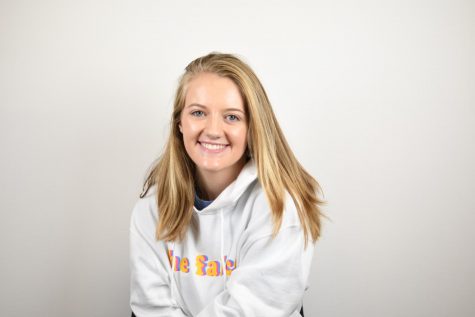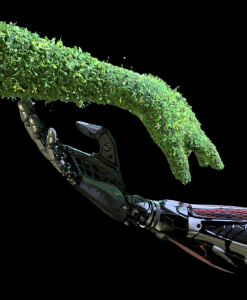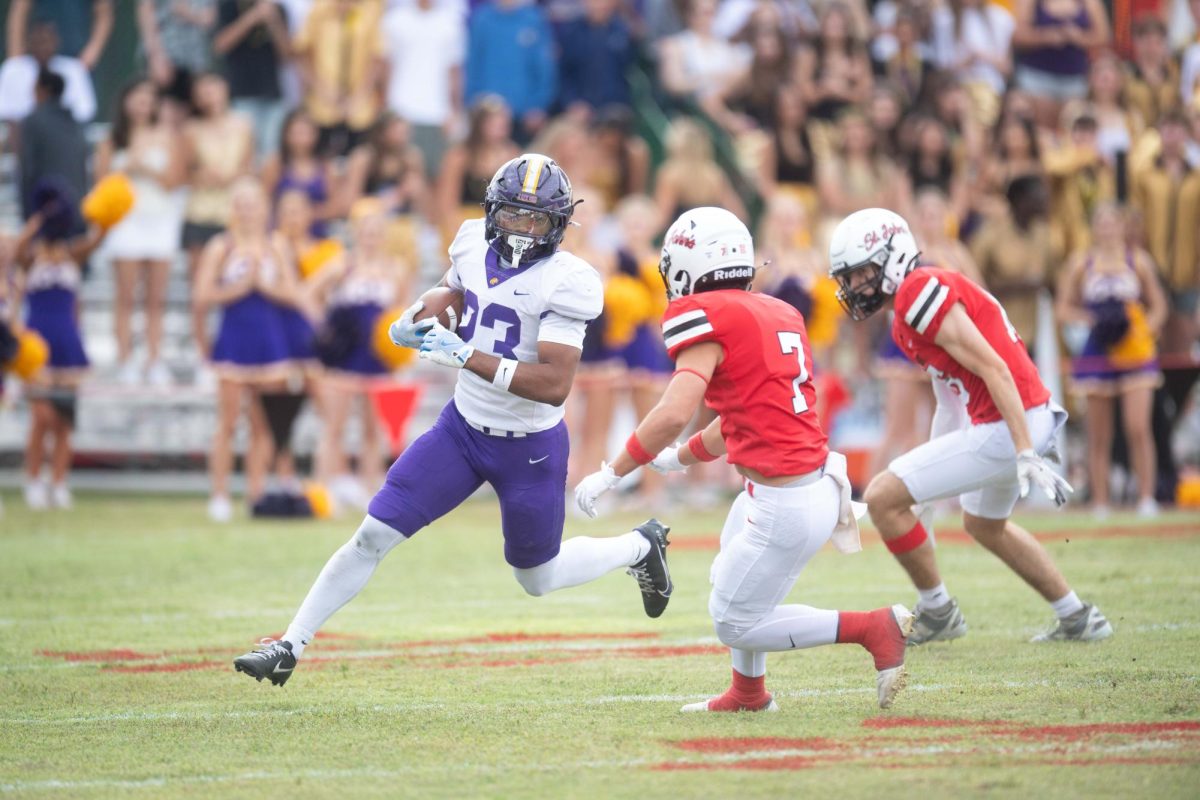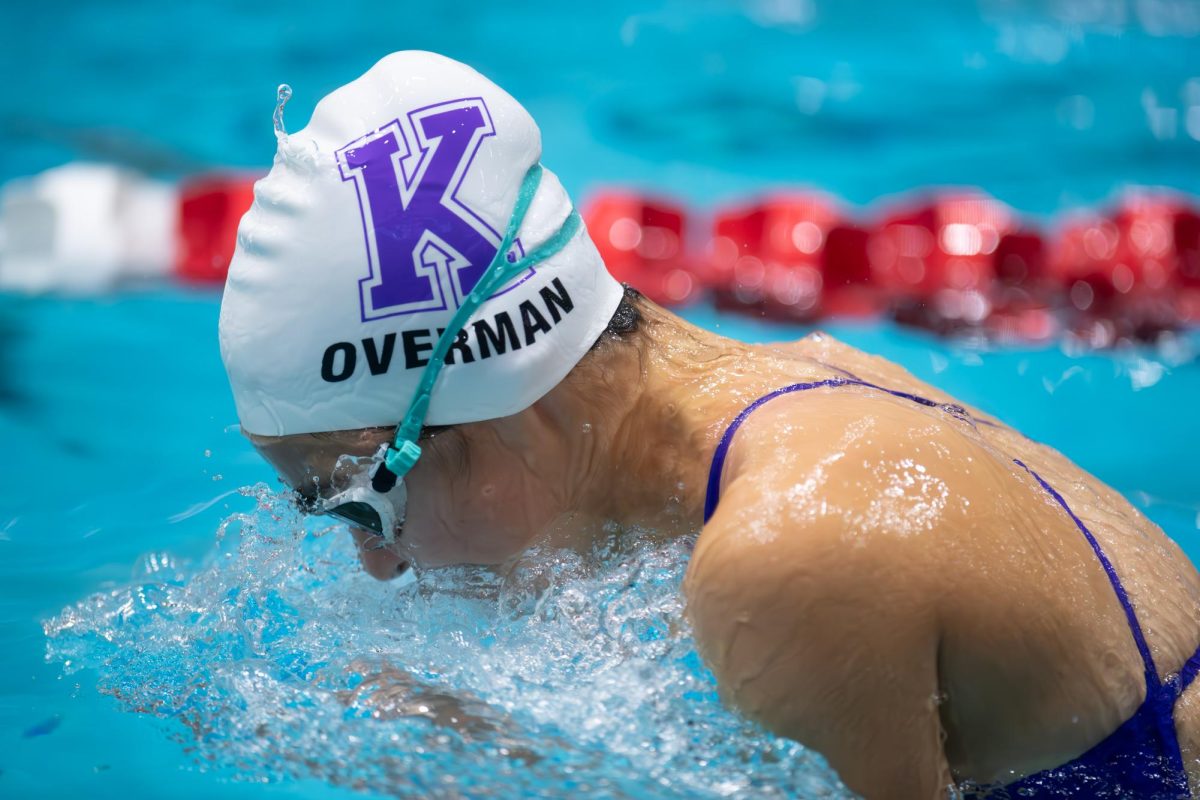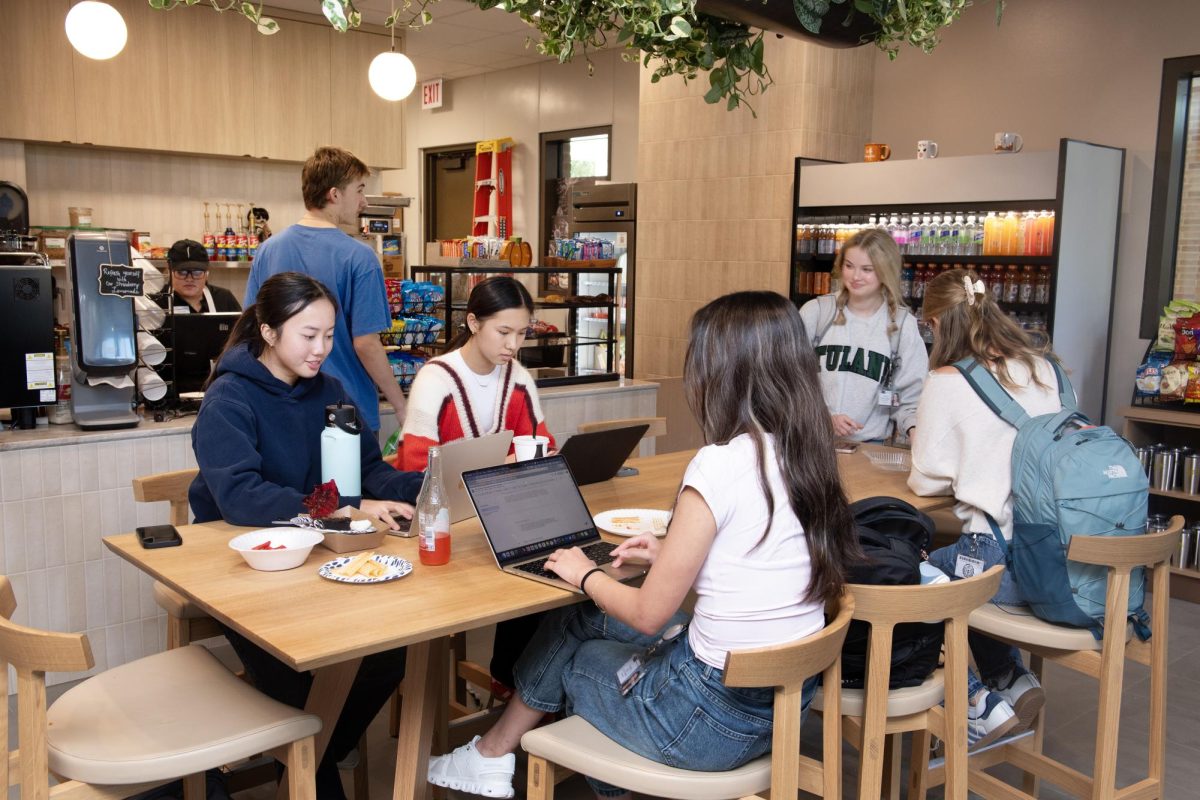Q&A with senior choreographer
A preview of junior Ella Ducharme’s choreography performed by some of the students in advanced dance.
February 24, 2020
Every Spring, junior and senior dancers, who are in advanced dance and/or DCO, have the opportunity to choreograph, direct and design a dance performance. This process is something they work tirelessly to produce by organizing auditions, cating, conceiving their pieces, designing their own lighting, and designing costumes. “They are learning to be flexible, while standing up for their own vision, they are learning to truly collaborate with a variety of people both students and adults, they are learning about scheduling, learning to to have efficient rehearsals and learning effective communication skills both as teachers of steps and as an artist communicating their art and vision. ” said Upper School theater and dance teacher Kristen McKinney. This year ten choreographer (Sarah Stephens, Serena Thompson, Sapphire Thompson, Madison Edwards, Katie Taylor, Ella Ducharme, Megan Maclay, Caroline Grinstead, Lee Saunders, Carlie Sachs) will see their choreography come to life on at the showcase on April 25 and 26.
Q&A with senior Katie Taylor:
- How do you choose a song/ what do you look for when choosing a song to choreograph to?
- It kinda depends. Some people find a certain style of dance they want to choreograph and then they find a song to match that, but then some people find a song they are inspired by and dance to that. For me, I knew I wanted to do a hip hop that was fun and energetic so I looked for lots of loud beats and intense music. To find my song, I looked at different artist’s music who I already know have the hype music I was looking for.
- Can you explain or walk me through what the choreography project process looks like?
- After finding a song, choreographers will begin to slowly choreograph their dances piece by piece. We have open auditions where we teach students a few bits of 3 different dances — normally, one contemporary, one jazz and one hip hop — and then assess how they performed with the given choreography. After auditions are over, choreographers meet together and create their “dream casts” and then we configure a schedule that works for everyone. After the schedule is made, the choreographers team up with lighting designers in tech theater and we create our stage lighting from scratch. Once we all have our casts and stage lighting done, we start rehearsing for about 6-7 weeks before tech week begins. Once we have rehearsed and finished dress rehearsals we perform!
- How have you prepared for the projects in the past years? What have you learned from being a part of past projects?
- Last year, I choreographed with Sarah Stephens and I think it was a great way for me to slowly understand how the choreography process works, without fully being dropped in the deep end. Split with Sarah, we were able to understand the efficient ways in teaching choreography, how to create formations etc. From being a choreographer and also in other dances, it really opened my eyes to see how difficult it is to transfer your ideas on paper onto other bodies, while still maintaining the “image” you want.
- How do you choose your cast of dancers for your piece? Are you looking for a specific skill set or type of dancer?
- Personally for me, I look for a mix of skill and personality. In hip hop, you want people to look like they are having fun and smiling — so I look for people in auditions who are smiling and look relaxed and like they are having a good time. Also, skill-wise, I look for people with good rhythm and who can “groove” to the music like I envision.
- What is it like seeing your dance come to life on stage?
- Seeing my dance come to life on stage is one of the most satisfying things because it truly portrays all of the stress and hard work that all the choreographers have worked through. All of these projects take so much time and energy out of us and once it is performed on stage it is so rewarding.


